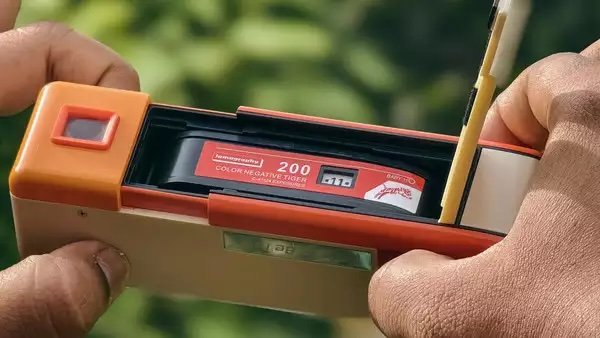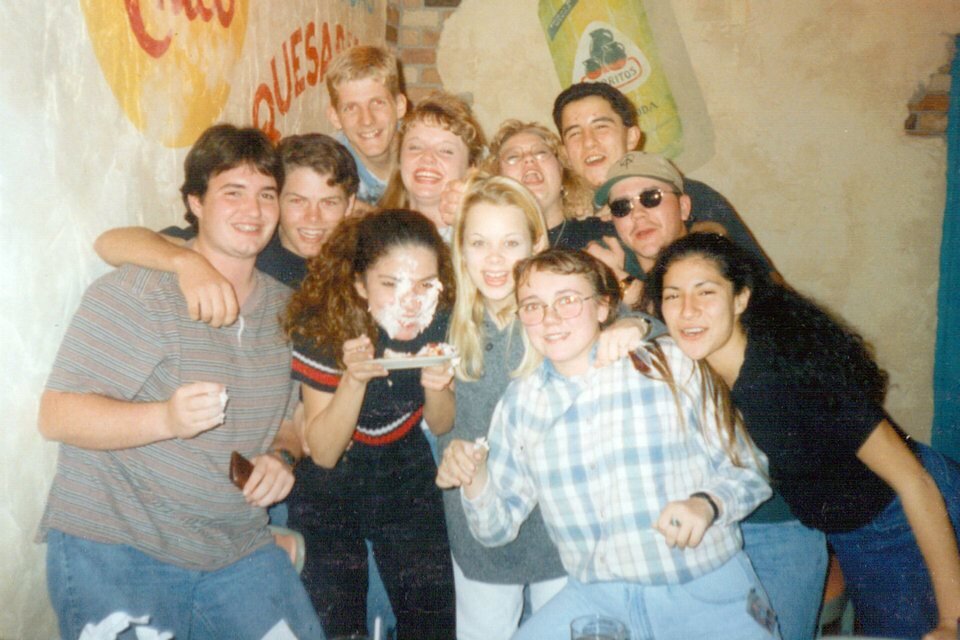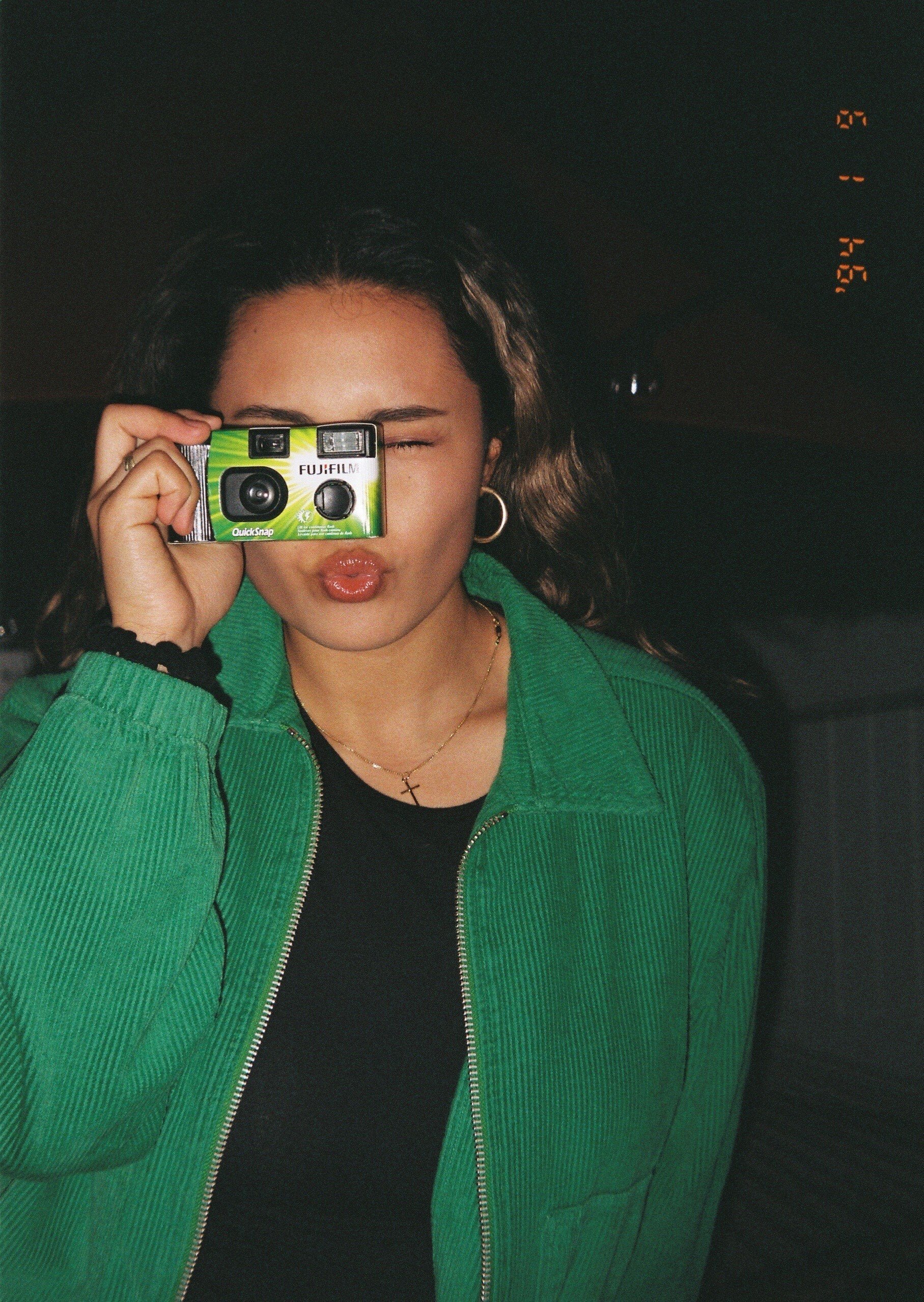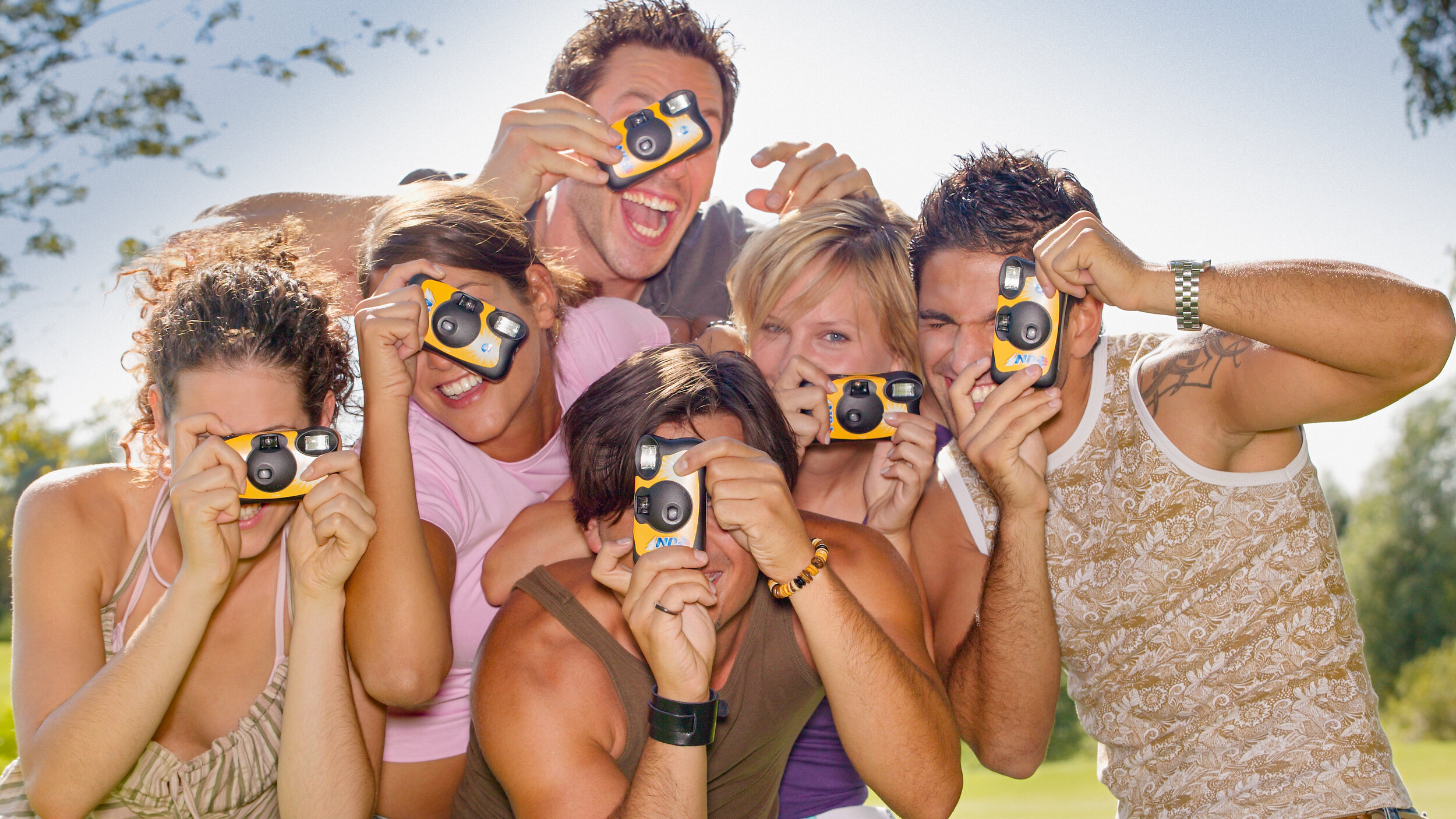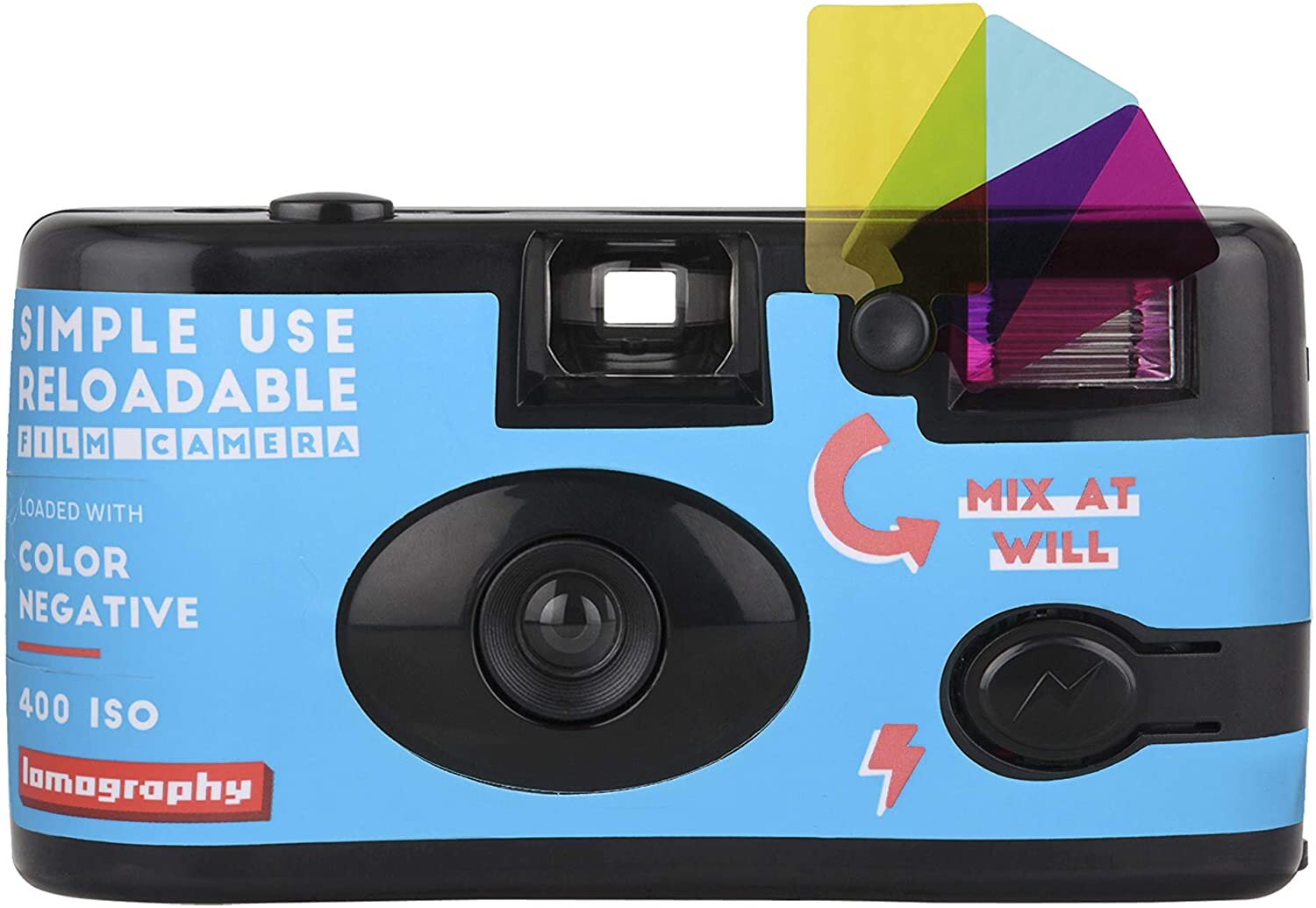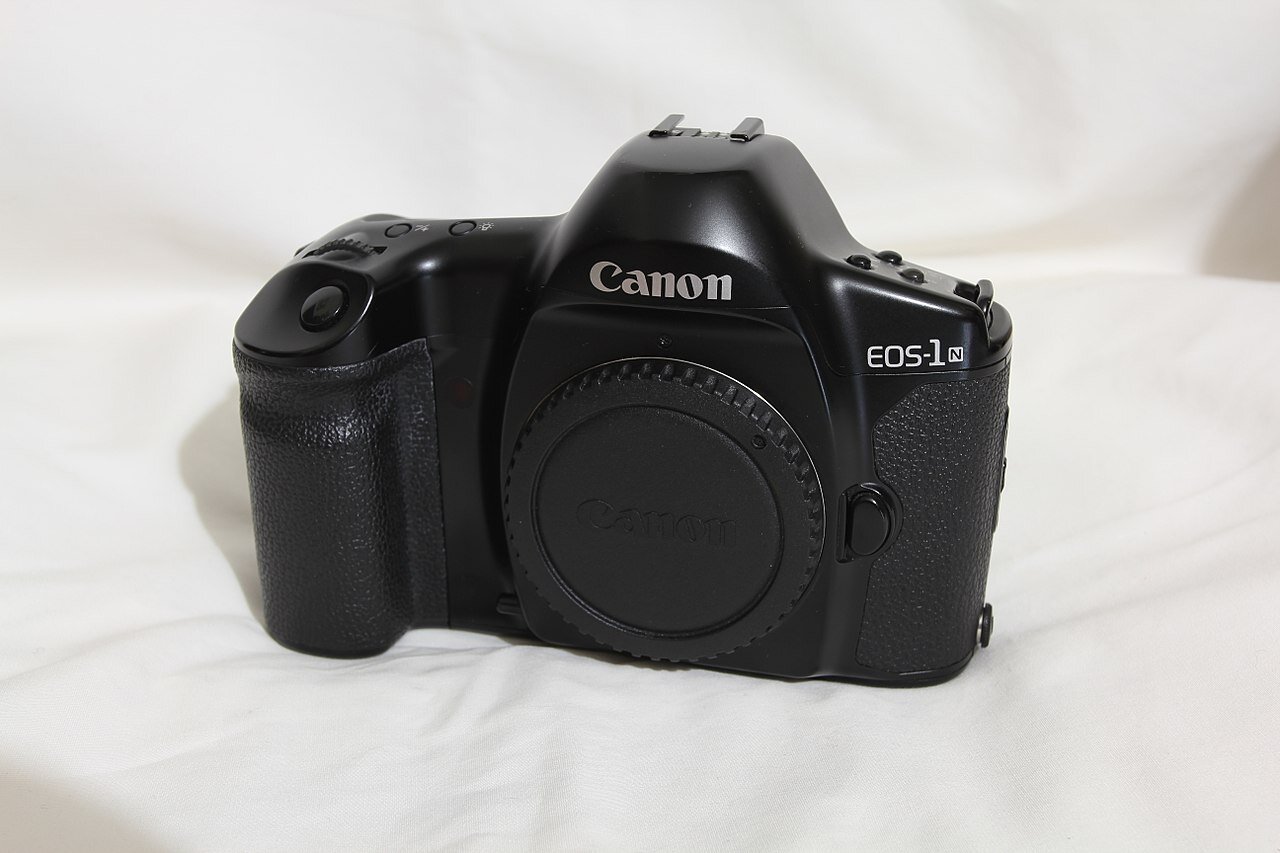Your Guide to 110 Film Developing in 2025!
Getting your 110 film developed is easy! Lots of labs still develop and scan 110 film.
Before we talk about 110 film developing, lets take. a quick look back. 110 film was HUGE in the 80’s and 90’s. As digital came on the scene 110 film was one of the first formats that disappeared. 110 film lovers hung on for years using expired 110 film and the occasional release of hand-made batches in the hopes that someone would bring 110 film back. Now it’s 2025 and we can definitely say that 110 film is back! Lomography began manufacturing and selling 110 film several years ago and its popularity has steadily increased year after year. 110 film is affordable and its smaller form factor makes it a fun film to use on a daily basis. However, finding a place to develop 110 film can be a challenge. In this guide, we'll explore the best places to get your 110 film developed, ensuring your cherished moments are beautifully preserved.
Why Develop 110 Film?
Developing 110 film can be a nostalgic journey, offering a distinct look that digital cameras can't replicate. They smaller frame size creates an image with more grain and the direct flash that is often used with 110 film gives it a look similar to a disposable camera but uniquely its own. Its so much fun to shoot and more affordable and more convenient than 35mm film.
Whether you’re shooting an old stash of undeveloped film or are experimenting with vintage photography, developing 110 film allows you to relive memories or create new ones with a retro touch. But you don’t want to let that 110 film sit around as it decays just like 35mm film and it doesn’t take long for your images to completely disappear. Also, 110 film comes with a paper wrapping which can bleed into and damage the emulsion. Having worked in a photo lab for many years now, I can tell you that much of the damage to 110 film results from the inks on the backing paper bleeding onto the film. So don’t let your film sit around too long before you get it developed.
Where to Get 110 Film Developed
1. Local Photo Labs
Local photo labs can be a great option for developing 110 film. Many independent photo labs, particularly those with a focus on film photography, offer 110 film development services. Here are some tips for finding a local lab:
Check Online Directories: Use online directories or Google Maps to search for photo labs in your area. Look for reviews and ratings to gauge their service quality.
Visit Camera Stores: Many camera stores either provide film development services or can recommend local labs that do.
Community Recommendations: Ask in local photography groups or online forums for recommendations on where to develop 110 film.
If you’re in the North East Texas Area - you can stop by and see us at Shutter Junkies! We develop new and old 110 Film from all manufacturers and scan the negatives at high resolution giving you the highest quality image possible. While many labs are moving away from developing it, we love it, we shoot a lot of 110 ourselves and are dedicated to helping to support and keep the format alive any way we can.
2. Mail-In Services
Mail-in services are a convenient option if you don't have a local lab nearby. Several companies specialize in film development by mail, offering easy-to-use services where you send in your film and receive your developed photos by mail. Some popular mail-in services include:
Shutter Junkies Photo Lab: A small lab that specializes in 110 film, Disposable Cameras, and developing old film. 110 Film processing is only $12 per roll and includes advanced scans with the option to purchase prints.
The Darkroom: A trusted name in film development, The Darkroom offers 110 film processing with high-quality scans and prints. Get your 110 film developed for $19, which includes basic small scans. You have the option to increase the scan size and order prints.
Old School Photo Lab: Known for its expertise in vintage film formats, Old School Photo Lab provides 110 film development with a range of scanning and printing options. Old School Photo Lab Develops 110 film for $17, which doesn’t include scans. Get your 110 film scanned for an addition $10 (making it $27 for each roll).
Dwayne's Photo: With decades of experience, Dwayne's Photo offers reliable mail-in services for 110 film, ensuring your photos are handled with care. 110 developing starts at $10 per roll but doesn’t include scanning. Add scanning for an addition $5.
3. Retail Chains
Most retail chains no longer develop 110 film. After the film apocalypse occurred in the early 2000’s and 110 film began to become a more niche film format, many labs simply sold or stopped maintaining the equipment to develop and scan 110 film. Big retail chains like CVS, Walgreens, and Walmart began to only focus on developing 35mm film and dropped their support for 110 film. Retail chains might still have the ability to develop 110 film, but most can no longer scan 110 film. Many of our customers have sent us 110 film that were developed by CVS or Walgreens or Walmart but that were never scanned because they lack the ability.
But if a big retail chain is the most convenient for you, then check in store and see what their current capabilities are in regards to 110 film. Be sure to ask if they are to both develop and scan the film before you turn your rolls over to them.
4. Develop Your Own 110 Film
While many labs no longer support 110 film, it is possible to develop and scan your own 110 film. There is quite a bit of special equipment you would need as well as chemistry and the learning curve can be quite steep, but developing your own 110 film could save you a lot of money in the long run if you’re shooting a lot of it. There are many resources out there for developing your own 110 film. Check out this article by Bob Janes to get an idea of what all is required to develop your own 110 film!
Tips for a Successful 110 Film Developing Experience
Check Compatibility: Before sending your film, ensure the lab or service you choose can process 110 film specifically.
Inquire About Turnaround Time: Ask about the expected turnaround time for developing and returning your film, especially if you need the photos by a certain date.
Understand Costs: Compare prices for development, scanning, and printing services. Some labs offer package deals that can save you money.
Careful Packaging: When using mail-in services, package your film securely to prevent damage during shipping.
Conclusion
Developing 110 film can be a rewarding experience, allowing you to rediscover old memories or create new ones with a vintage flair. Whether you choose a local photo lab, a mail-in service, or a retail chain, plenty of options are available to get your 110 film developed. By following the tips and recommendations in this guide, you'll be well on your way to enjoying your 110 film photographs. Happy shooting!
Disposable Cameras - Everything You Need to Know!
Disposable cameras are still around and they’re as fun and easy to use as ever!
Disposable Cameras in 2021
In the late 1990s, disposable cameras were all the rage. As a completely irresponsible teenaged high school student, my parents would have never trusted me their real camera, so every time I went on a trip or out with friends, I always had to stop and pick up a disposable so I could at least record a few of the moments from the event. They were available everywhere and getting them developed and prints made was easy. But then came camera phones, the internet, social media, and the film industry and infrastructure took a huge hit. People stopped using disposable cameras and companies stopped producing as many of them, but they never stopped producing them! You can walk into any Walmart or CVS or Walgreens and still pick up a disposable camera! And, let me tell you, they are still completely amazing! If you’ve never shot with one, you absolutely should! They are a great way to get into film and with the resurgence of film photography in the last few years, the infrastructure is building back up to get your images developed and scanned!
What is a Disposable Camera?
It’s a very simple, very cheap pre-loaded roll of 35mm film loaded into a plastic body with a simple mechanical shutter and film advance and some very basic electronics and a battery. Originally, they were made to simply be dropped off at the local film collection center so you didn’t even have to deal with disposing of the camera and they could be easily recycled. Nothing is adjustable - everything operates in a fixed mode. The lens is fixed and plastic, the aperture is fixed, the shutter speed is also fixed at around 1/100th of a second. The only variable is the film speed. You can usually purchase disposable cameras in ISO 200, 400, and sometimes 800. The flash is usually decently powerful and is normally off. You normally have to press a button to charge the flash before you click the shutter. The recharge button has to be pressed each time so that you can have the flash charged for each shutter click.
These cameras are still made to be taken/sent directly to a film lab for processing, but they can easily be processed at home and if you want to save money on postage when you send your film in, you can open up the camera and send the roll of film in by itself.
Disposable cameras all come loaded with film, there are several different options ranging from basic color to black and white to some crazy film stocks. Disposables come in a lot of different film speeds also, so it gives you a lot of flexibility
Where Can I get a Disposable Camera?
Disposable cameras are available at a lot of places! They are sold in-store at CVS, Walgreens, Walmart, and Target. Mostly these stores either carry a Fujifilm or Kodak disposable in a single pack, a multipack, and a waterproof model.
You can also pick them up online from Amazon and several other retailers. Amazon and other online retailers have a much better selection!
| Store | Description | Price |
|---|---|---|
|
|
||
| CVS | Fujifilm QuickSnap Flash 400 Camera | $14.99 |
| CVS | Fujifilm QuickSnap Flash 400 Camera, 2 Pack | $25.99 |
| CVS | FujiFilm QuickSnap Waterproof Camera | $23.99 |
| Walgreens | Kodak HD Power Flash Single Use Camera | $19.99 |
| Walmart | Fujifilm QuickSnap Flash 400 Camera | $14.96 |
| Walmart | Fujifilm QuickSnap Flash 400 Camera, 2 Pack | $24.96 |
| Walmart | FujiFilm QuickSnap Waterproof Camera | $11.75 |
| Target | Fujifilm QuickSnap Flash 400 Camera | $12.99 |
| Target | Kodak HD Power Flash Single Use Camera | $12.99 |
| Target | Kodak Water Proof Camera | $18.99 |
How Do You Use a Disposable Camera?
Disposable cameras are great because they are so very easy to use. The only thing you need to worry about is buying the right camera/film speed. Because the settings are all locked, there’s no flexibility in exposing the film. While you could maybe use a 200 ISO film in a darker room, an 800 ISO film might not be the best for a bright sunny day. Fortunately, the cameras are all labeled with what lighting environments they are best suited for. All you need to do is make sure you select the right one.
After that, you literally just point and shoot. The focal range is pretty big on these cameras. The biggest thing you need to remember is that the minimal focal distance is going to be your biggest concern. You can’t put the camera right in your face and expect the image to be in focus. Generally, I’ve found that about an arm’s length away is the minimal focal distance for these cameras. If you’re in the shade or a shady area, you should definitely always use the flash. In fact, even if you are out in the sun, use the flash any way as it helps to fill in the harsh shadows on the face. In most situations, you can never have enough light!
It is important to note that when you are taking a photo, looking through the viewfinder only gives you an approximation of the image you are taking. There is no optical view finder or ranger finder, its simply a hole in the top of the camera for you to look through. You need to take parallax into consideration when taking photos of objects close to you as it might change the final composition of the actual image.
Where Can I Get My Disposable Camera Developed?
There are still quite a few places out there that process film. Unfortunately, most of them are not local for the majority of us. I created a blog post talking about your options for getting your disposable cameras developed. Check out that blog post HERE! There’s a lot of great information there that will also help you with disposable cameras. Walmart, Walgreen, and CVS still process film, but you won’t receive your negatives back. Even if you’re new to film, one thing you need to know is that YOU ALWAYS WANT YOUR NEGATIVES BACK! If a service doesn’t return your negatives, don’t use them. If you have your negatives, you can reproduce the image as many times as you want. The digital scans are no replacement or substitute for the film negatives.
We also offer disposable camera processing! Unlike some of our competitors, we handle your images ourselves and we always return your negatives. Click HERE to get your order started! You can also send it off to a number of really great labs out there. Richard Photo Lab is great as well as The Darkroom. Almost all labs will give you scanning options as well as prints and other options. If you’re mailing your film in, you. might want to remove it from the camera so save on postage. If the lab you are sending your film to offers a pre-paid label, I would just send the whole thing in. Most labs have places to recycle the cameras and batteries and it beats throwing all of that away yourself.
How to Get Disposable Camera Pictures on Your Phone
Almost every lab the processes your negatives will offer scanning services. With The Darkroom, you can have your images scanned and they go to a gallery where you can download them onto any device, including your phone. I usually opt for higher resolution scans so that when I download them to my phone or tablet, I’m getting an image that’s decent enough quality that it could be printed. You can also purchase a film scanner yourself and scan your negatives. It is a little more work but it gives you a little more control over the scans and the final product.
Simple Use Vs. Single Use Cameras
There are two other types of cameras out there on the market which fall into the disposable camera family, in my opinion. Recently, Lomography.com released a new line of cameras call Simple Use Cameras which shared the design and simplicity of a disposable camera, but were made to be reloadable. Disposable cameras have to be essentially broken to get the film out and while you can reload and tape up the camera and use it again, it’s pretty much trashed. Lomography’s Simple Use Cameras come pre-loaded with film and are easily reloaded and reusable. The price for these cameras is significantly higher than traditional disposables, but you have to take the reusability into consideration when looking at the price.
Single-use cameras are merely a rebranding of disposable cameras. With sustainability and conservation being very popular some companies decided to move away from the disposable moniker because of negative connotations associated with the word disposable. Single-use cameras are no different than normal disposable cameras.
Disposable Cameras are So Much Fun!
I have a large number of cameras, both film and digital I can shoot from at any given moment, and I still love using these disposable cameras! They’re just fun and almost stress-free! And I love the look of the images they produce! These are great to give to the kids to take on trips but they're also great to grab and have some fun with friends. As a camera, they are way less intimidating than a mirrorless or an SLR, or even a cell phone. Anyone can pick one up and start shooting and that’s the magic of these cameras and why they have never gone away in spite of the roller coaster that film has gone through.
Jump on Amazon and check out what’s available or run down to your local Walmart and pick one up and have some fun! You won’t regret it, I promise!
The Canon EOS 1N
If you’re considering picking up a Canon EOS 1N - this is a great camera to work with!
I own quite a few film canon film cameras. I enjoy using all of them from time to time, but the Canon 35mm film camera that I used the most is the EOS 1N. The familiar layout combined with the fact it uses all of the lenses I already own make it the camera I reach for first whenever I go out. If you’re considering getting into film or stepping up from an older Canon AE-1, then this is definitely the camera for you!
Canon EOS 1N Questions
If you’re considering a 1N, then you might have some questions. I’m going to start with a few common questions to hopefully help you find the information you’re looking for.
What kind of film does the Canon EOS 1N use?
The 1N is a 35mm film camera and can use ALL 35mm films in a standard film cartridge. Color, black and white, and specialty stocks all work great with this camera. Certain films might not have the ISO data encoded into the film and therefore you might have to set the ISO manually, but the film will still work fine in the camera.
What kind of lenses does the Canon EOS 1N use?
The 1N uses Canon’s very popular EF-mount. EF lenses are still in production and there is an abundance of used lenses out there on the market. Beside the option to buy new or used lenses, EF lenses from Canon also come in a broad range of focal lengths, prime and telephoto, as well as a broad range of glass quality from some very basic beginner lenses all the way up to their L-series glass which boasts some of the most beautiful optics in photography.
What kind of batteries does the Canon EOS 1N use?
The Canon EOS 1N body uses a 2CR5 battery. These batteries are available locally at battery and electronics stores and also available on Amazon. I’ve used the Panasonic 2CR5 as well as the Energizer 2CR5 and have had good results from both.
If you get a 1N with the optional BP-E1 battery pack then you could simply load AA batteries. These battery packs are no longer produced but if you can pick up a used one its a simple addition to your Canon 1N SLR.
Can I use a flash with the Canon EOS 1N?
Yes! All of the Canon branded flashes work great with the 1N. There are also several non-Canon flashes that work great with the camera and are much more affordable. You can pick up an older used flash or buy a brand-new one. The 1N utilizes TTL to help you get a better result while using a flash. I personally recommend the Canon Speedlight 600EX II-RT. It’s a little bit pricey, but the features and build quality make it totally worth the price!
Does the Canon EOS 1N have autofocus?
Yes! It features a 5-zone autofocus utilizing TTL phase detections. The focus zones consist of a series of five little boxes that are placed across the middle of the image. You select with zone you want to use and then place and half-press to focus. The autofocus is a little slow compared to more modern cameras, but it is accurate.
How much does the Canon 1N cost?
You can expect to pay between $100 to $350 for a used Canon 1N according to my research looking at Ebay, Facebook Marketplace, and a few used camera dealers. The condition of the camera affects the pricing the most.
Canon EOS 1N Review
I bought this camera as a compromise. I actually wanted a Canon EOS 1V, but the prices of the 1V were outside of my budget. I spent quite a bit of time looking at used camera sites and Ebay before I finally found a camera that was in good shape at a decent price. While I generally do love the camera, it does have a few issues. Here’s a breakdown of the pros and cons of the Canon EOS 1N:
Pros
Familiar form factor with other Canon SLR/DSLR bodies
Popular lens-mount (Canon EF)
Availability of both new and used lenses
Modern features like autofocus and TTL flash
Auto-winding film
Rugged design
Cons
Batteries are a little inconvenient to find sometimes
Battery has some connectivity issues (I have had to recently insert a piece of tape to keep the battery pressed against the contacts)
There’s a common issues with the shutter becoming stuck and not cycling, but is easy to fix (has only happened to me once when I first got the camera)
Focus is limited to only 5 zones and is a little slow (great for portraits, not so great for events…)
Should You Buy the Canon EOS 1N?
Absolutely! If you’ve already invested in the Canon eco-system, you can pick up a body and use all of your existing accessories, which is a huge win. If you’re just getting started but know you want to live in the Canon eco-system then anything you buy will work on all of the existing Canon equipment (with the exception of the newest mirrorless devices that use the new RF lenses). Also, if you’re interested in getting into film but don’t want to go the fully manual route that many of the older 35mm SLRs require you to take, then the 1N is a great camera at a great price-point that offers enough modern features to get you started. Just rotate the mode selection into P for Program and shoot away and you’ll get great results almost every time!
There are a lot of great features and specific settings that can help you get a lot out of the 1N - but honestly, I don’t use most of them. I mainly use mine for shooting 35mm film at weddings and special events when I need the speed of autofocus and the ability to use the lenses I already have with me. When I get an opportunity, I will also be picking up and Canon EOS 1V and will more than likely retire this camera. But its still a great workhorse and is dependable in spite of its age!
If you need more information, make sure and download the user manual below! It’s got everything you need to know about using the camera on a daily basis!
Check our Online Store for the Canon 1N
We occasionally carry these in our online store! Click here to see if we have any in stock!
Recommend Films to use with the Canon EOS 1N
If you’re a beginner, here’s some links to some great film to get you started with your Canon 1N.


